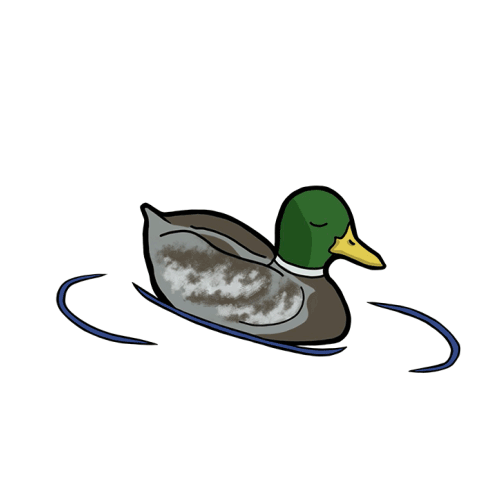How to — safely — make the most of outdoor swim season around Salem
- Kat Thornton, Staff Writer
- May 9
- 3 min read

With temperatures on the rise and sunny days ahead, it’s the time of year in which many set their sights on swimming. Within an hour of campus, there are several options for cooling off with a swim or trying out other recreational activities. Here is the rundown on options and protocols for that sweet, warm-weather swim day.
By far the closest option to campus is the Mill Stream. The waterway is shared with ducks, nutria, racoons, the occasional heron and many other small creatures, including but not limited to bacteria. Its main downfall, however, might be that its shallow depth prevents any actual swimming.
Next up in geographical proximity to campus is the Chicken Fountain. College students are not advised to swim in the fountain outside of necessary circumstances such as heatstroke, post-prom dress rugby, or late-night boredom.
The Willamette River
The Willamette river is the closest truly “swimmable” waterway to campus. There are multiple places to access the river, the nearest being Wallace Marine Kayak Launch. To get there, head a half mile to Riverfront City Park and cross the Union Street Railroad Walking Bridge. Here, the beach’s long, sloping descent into the water makes the site well-situated for wading.
Another popular access point is Minto-Brown Island Park. To get there from Riverfront Park, it is just over a 2-mile walk. One can also arrive by taking a short drive from campus to Minto’s third parking lot, which is situated right next to the river.
Once at Minto, one can walk alongside the river heading south to find what is often called “the rock beach.” Many of the beaches along Oregon’s rivers are rocky, and yet the site’s ad-hoc title suffices to indicate the only large beach at Minto. However, one can also pick access points from many small, sequestered trails that can be found throughout the park.
Lakes
A 15-minute drive from campus, Turner Lake Park in Turner, Oregon is a promising locale. Only a small portion of the lake is available for swimming, but it’s a popular spot for all kinds of activities.
Silverton Creek Reservoir is only a half-an-hour drive from the Willamette campus in the cascade foothills. In the summer, the reservoir becomes a popular spot for recreational activities including paddle boarding and electric-motor boating.
Another 30-minute drive from campus leads to North Santiam State Recreation Area along the Santiam River. And 45 minutes out, along Highway 22, is Niagara Park. This is a short stop off the main highway heading east, which boasts beautiful swimming holes.
Staying safe
According to the Human Access Project, there are important safety precautions to take while swimming in the Willamette River or any body of water.
It’s important to know the water you are swimming in. Many rivers, including the Willamette, feature strong, erratic currents that can be dangerous. Grown adults can be knocked over by fast-moving water even at knee height or lower. In rivers, it’s especially important to be aware of one’s own abilities and limitations when it comes to swimming and to remain close to shore with others nearby.
Another serious risk to look out for is harmful algal blooms. Blue-green algae blooms specifically can occur anytime of year and are even more prevalent between June and September. They can become highly toxic to humans and animals. Parks will often have posted messaging that warns the public about algae blooms when they happen. This isn’t always the case, however, so it’s a good idea to check online resources such as the Oregon Health Authority before heading to a spot.
Algal blooms aren’t the only harmful substance that can make their way into Oregon’s rivers. Willamette River Keepers, a water protection non-profit, offers a swim guide that provides E. coli level updates for many inland swim spots.
For those that criticize swimming in local bodies of water, Fia Rosenberg (’25), who regularly swims in the Willamette, offered their opinion on the matter, saying, “I feel informed from my coursework. I’ve done research on water quality. I'm a STEM major, I feel like I know some of the things to look for … obviously there are some [bodies of water] that are not safe, and never will be because they are nasty. I feel like a certain level of concern for safety is good but I’m a little worried we’ve taken it a little too far, to the point where it’s preventing people from getting in their local river, which people should be doing.”
While the River Keepers have currently given the Wallace Marine Park the green light for swimming, it’s worth noting that the City of Salem often experiences sewage and rainwater overflows into the Willamette in the wet season. With safety practices in mind, happy swimming, Bearcats!



![[Updated] ASWU senate votes unanimously against the affiliation of Turning Point USA chapter](https://static.wixstatic.com/media/4799e7_14c1f1c2ae4c4b0e9cefcbe8579556c3~mv2.jpg/v1/fill/w_980,h_653,al_c,q_85,usm_0.66_1.00_0.01,enc_avif,quality_auto/4799e7_14c1f1c2ae4c4b0e9cefcbe8579556c3~mv2.jpg)
Comments